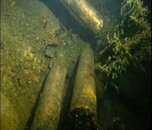I'm pretty sure there were none capable of running Buhlmann GF, VPM, or the full iterative RGBM. As far as I recall, the first was the Liquivision X-1, introduced around 2008.
Buhlmann with GFs, VPM, and RGBM were not available in 1990.Really reaching back in my memory on this. I had a USD M1 in 1990 ($400!) and I want to say it was on the Haldane Algorithm? I could be mistaken though
The primary usage for those algorithms was technical diving, and the original question in this thread was about very shallow recreational diving, so shallow, in fact, that the use of tables is not really necessary.
My original tech training was DIR, and computers were absolutely not allowed, whether for shallower training diver or decompression diving. When I did my trimix with TDI, everyone was following V-Planner schedules (VPM), determined the day before the dive on a desktop computer. No one used a computer in the water. Then people went to desktop plans with dive computers (mostly Liquivision) as a backup. Then they followed the dive computer with the desktop plan as a backup. Now it has been years since I have seen a technical diver with anything other than 2 Shearwaters.





